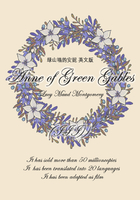The FAST Team Test will either confirm your suspicions, amplify key areas of focus, or change your mind altogether. The purpose of the FAST Team Test is to rate, in your opinion, how well your team has mastered the four Keys of FAST Teams and implemented the twelve Accelerators.
Each person will individually rate the team, based on his or her experience, perception, and opinion. For each Accelerator, the test drills down to the four corresponding Speed Bumps to determine if your team has a problem with that item. That way, you know which of the forty-eight Speed Bumps your team should start with to maximize speed and productivity.
After you take the assessment, transfer your scores to the Score Sheet to analyze them further. If you're working this program as a team, the Team Car Chief will schedule the first meeting, so make sure to print and bring your results to that meeting or have the PDF available on a device.
You can also take this test online at www.fastertogetherthebook.com. If you request your test results be emailed to you, you'll receive a PDF with your score. Team members can bring their individual reports to the kickoff meeting to compare results. We also offer a customized team assessment with collective scoring; email me at Laura@TheProductivityPro.com to inquire.
After you finish the program, you can take the FAST Team Test again several weeks or months later to check your understanding and implementation of each Key. With each reiteration, you'll gain a better understanding of where you need to be on the FAST Team scale, and what Speed Bump you should all work on next.
Even if your team isn't working the program with you, you can read the book independently and work to influence your team members. Frequently stop to ask yourself this question: “How can I make my team go FAST?” And don't worry: for each of the Keys, Accelerators, and Speed Bumps that follow, I will not only remind you of that question, I'll give you real-life examples from my experiences and my clients' experiences to illustrate how you and your team members can become FASTER TOGETHER.
I'm a much better driver now, because I listened to what the instructor was telling me and worked hard to implement changes in my behavior. That's all I ask of you. I hope this book helps you and your team to go FASTER TOGETHER and achieve a higher level of success.
THE FAST TEAM TEST
Before you take this assessment, consider these questions:
Where do you currently feel your team needs improvement?
_________________________________________________
_________________________________________________
_________________________________________________
_________________________________________________
_________________________________________________
Where is your team inefficient?
_________________________________________________
_________________________________________________
_________________________________________________
_________________________________________________
_________________________________________________
How do people slow each other down?
_________________________________________________
_________________________________________________
_________________________________________________
_________________________________________________
_________________________________________________
What can you personally do to help your team go faster?
_________________________________________________
_________________________________________________
_________________________________________________
_________________________________________________
_________________________________________________
KEY 1: FAIRNESS
Accelerator #1. Building Relationships
To what extent does my team:
1. Work together to maximize team productivity? We apply the same performance standards to everyone and speak up when someone doesn't pull his or her weight.
1 2 3 4 5
To what extent does my team:
2. Challenge negativity in team members? We all try to be as positive as possible and jump in to help when things go wrong, rather than complaining.
1 2 3 4 5
To what extent does my team:
3. Contribute to good team morale? We celebrate together and try to make our team a happy, enjoyable workplace for both physically present and virtual members.
1 2 3 4 5
To what extent does my team:
4. Act like leaders, even when we don't have leadership titles? We lead by example and role model our positive expectations of others.
1 2 3 4 5
ACCELERATOR #1 SUBTOTAL: ________
Answer each question using the following scale: 1 = to no extent; 2 = to a small extent; 3 = to some extent; 4 = to a considerable extent; 5 = to a great extent
KEY 1: FAIRNESS
Accelerator #2. Handling Conflict
To what extent does my team:
5. Expect each person to maintain high productivity levels? We work to understand how we frustrate others and to change our behaviors.
1 2 3 4 5
To what extent does my team:
6. Disagree constructively? We aren't afraid to speak up and give our opinions, even when they aren't popular.
1 2 3 4 5
To what extent does my team:
7. Follow a set of ground rules that govern how we work together? We “play by the rules” and support the team, even when we don't agree with a direction or decision.
1 2 3 4 5
To what extent does my team:
8. Work well with remote members?
We make efforts to connect solidly with virtual team members to maximize productivity and achieve our mutual goals.
1 2 3 4 5
ACCELERATOR #2 SUBTOTAL: ________
Answer each question using the following scale: 1 = to no extent; 2 = to a small extent; 3 = to some extent; 4 = to a considerable extent; 5 = to a great extent
KEY 1: FAIRNESS
Accelerator #3. Improving Cohesiveness
To what extent does my team:
9. Make everyone feel included? We all feel connected to something bigger than ourselves and identify with the team.
1 2 3 4 5
To what extent does my team:
10. Work to achieve consensus when it's required? We know that consensus isn't required for every decision and that collaboration isn't always necessary.
1 2 3 4 5
To what extent does my team:
11. Cooperate to get things done? We know that our actions reflect upon others and try to make each other proud of our team.
1 2 3 4 5
To what extent does my team:
12. Work well with other teams or departments? We see other groups as valued members of the organization, not an enemy to be dealt with.
1 2 3 4 5
ACCELERATOR #3 SUBTOTAL: ________
Answer each question using the following scale: 1 = to no extent; 2 = to a small extent; 3 = to some extent; 4 = to a considerable extent; 5 = to a great extent
KEY 2: ACCOUNTABILITY
Accelerator #4. Trusting Your Team Members
To what extent does my team:
13. Question the status quo?
We don't simply accept the current process as a best practice and are open to change.
1 2 3 4 5
To what extent does my team:
14. Abide by mutual shared values? We are committed to the written core values and goals of the organization.
1 2 3 4 5
To what extent does my team:
15. Take initiative to make changes? We make things happen quickly by implementing our strategies without hesitation.
1 2 3 4 5
To what extent does my team:
16. Share responsibility for our collective results? We can rely on each other to pitch in on special projects and emergencies.
1 2 3 4 5
ACCELERATOR #4 SUBTOTAL: ________
Answer each question using the following scale: 1 = to no extent; 2 = to a small extent; 3 = to some extent; 4 = to a considerable extent; 5 = to a great extent
KEY 2: ACCOUNTABILITY
Accelerator #5. Accepting Responsibility
To what extent does my team:
17. Define the job responsibilities of each individual performer? We all know where we best fit on our team and understand our performance expectations, aligning team goals with organizational ones.
1 2 3 4 5
To what extent does my team:
18. Expect me to pull my own weight?
We all work to boost our personal productivity in our behavior and performance.
1 2 3 4 5
To what extent does my team:
19. Use written work commitments as a part of our team productivity process? We hold ourselves accountable to published performance standards.
1 2 3 4 5
To what extent does my team:
20. Try to improve every day? We all believe it's our responsibility to continuously improve.
1 2 3 4 5
ACCELERATOR #5 SUBTOTAL: ________
Answer each question using the following scale: 1 = to no extent; 2 = to a small extent; 3 = to some extent; 4 = to a considerable extent; 5 = to a great extent
KEY 2: ACCOUNTABILITY
Accelerator #6. Maximizing Performance
To what extent does my team:
21. Admit to our flaws and shortcomings? We maintain a confidential environment allowing candid self-assessment and regularly refine our processes and procedures.
1 2 3 4 5
To what extent does my team:
22. Undertake regular training to better our productivity? We understand and accept the value of training.
1 2 3 4 5
To what extent does my team:
23. Encourage underperformers to correct their issues? We are honest about each other's shortcomings.
1 2 3 4 5
To what extent does my team:
24. Proactively do work that helps other team members? We have a great culture where people want to work hard for the team.
1 2 3 4 5
ACCELERATOR #6 SUBTOTAL: ________
Answer each question using the following scale: 1 = to no extent; 2 = to a small extent; 3 = to some extent; 4 = to a considerable extent; 5 = to a great extent
KEY 3: SYSTEMS
Accelerator #7. Making Effective Decisions
To what extent does my team:
25. Make decisions quickly? We make sure all team members are on the same page and on board.
1 2 3 4 5
To what extent does my team:
26. Encourage autonomous decision-making for lower-level tasks? We know not every decision is a team effort.
1 2 3 4 5
To what extent does my team:
27. Expect people to take initiative, rather than waiting for direction? We take appropriate initiative at the managerial, team, and personal level.
1 2 3 4 5
To what extent does my team:
28. Choose not to do things that waste time?
We don't pursue tasks with a low return on investment.
1 2 3 4 5
ACCELERATOR #7 SUBTOTAL: ________
Answer each question using the following scale: 1 = to no extent; 2 = to a small extent; 3 = to some extent; 4 = to a considerable extent; 5 = to a great extent
KEY 3: SYSTEMS
Accelerator #8. Managing Time
To what extent does my team:
29. Prioritize our work correctly? We all understand which tasks are the best use of our time.
1 2 3 4 5
To what extent does my team:
30. Accomplish work with high value first? We triage tasks and accomplish them in order of importance.
1 2 3 4 5
To what extent does my team:
31. Recognize that people need “non-tech time” to focus? We turn off technology to create blocks of time to focus on important work.
1 2 3 4 5
To what extent does my team:
32. Avoid wasting each other's time? We don't interrupt or socialize excessively and try hard to save each other time.
1 2 3 4 5
ACCELERATOR #8 SUBTOTAL: ________
Answer each question using the following scale: 1 = to no extent; 2 = to a small extent; 3 = to some extent; 4 = to a considerable extent; 5 = to a great extent
KEY 3: SYSTEMS
Accelerator #9. Increasing Efficiency
To what extent does my team:
33. Respect each other's need not to be interrupted? We devise creative ways to minimize unnecessary distractions.
1 2 3 4 5
To what extent does my team:
34. Work together to become more productive? We work together to eliminate time drains and areas of overlap.
1 2 3 4 5
To what extent does my team:
35. Try to limit the number of people involved in tasks and projects?
We recognize that not everyone has to have their hands in everything.
1 2 3 4 5
To what extent does my team:
36. Eliminate obstacles and bottlenecks that slow us down? We talk about the inefficiencies in our systems and work to correct them.
1 2 3 4 5
ACCELERATOR #9 SUBTOTAL: ________
Answer each question using the following scale: 1 = to no extent; 2 = to a small extent; 3 = to some extent; 4 = to a considerable extent; 5 = to a great extent
KEY 4: TECHNOLOGY
Accelerator #10. Communicating Properly
To what extent does my team:
37. Use appropriate channels of communication for each situation? We deliberately match the message to the proper medium.
1 2 3 4 5
To what extent does my team:
38. Message someone only when an urgent response is needed? We use distracting communication methods like texting and IM only when appropriate.
1 2 3 4 5
To what extent does my team:
39. Use clear, concise, courteous communication? We have adopted simple, efficient messaging standards.
1 2 3 4 5
To what extent does my team:
40. Not allow technology to take over our time? We use technology to save time, not waste it.
1 2 3 4 5
ACCELERATOR #10 SUBTOTAL: ________
Answer each question using the following scale: 1 = to no extent; 2 = to a small extent; 3 = to some extent; 4 = to a considerable extent; 5 = to a great extent
KEY 4: TECHNOLOGY
Accelerator #11. Meeting Effectively
To what extent does my team:
41. Hold productive meetings?
We constantly strive to make meetings shorter, more effective, and more efficient.
1 2 3 4 5
To what extent does my team:
42. Conduct effective conference calls? Our calls flow smoothly and produce great results due to our standardized protocols.
1 2 3 4 5
To what extent does my team:
43. Use video call and webcam equipment smoothly? When we hold video calls, they go off without a hitch.
1 2 3 4 5
To what extent does my team:
44. Implement effective “standing meetings”? We hold quick standing meetings to save time and boost productivity.
1 2 3 4 5
ACCELERATOR #11 SUBTOTAL: ________
Answer each question using the following scale: 1 = to no extent; 2 = to a small extent; 3 = to some extent; 4 = to a considerable extent; 5 = to a great extent
KEY 4: TECHNOLOGY
Accelerator #12. Following Protocols
To what extent does my team:
45. Follow standard guidelines for email? We don't waste each other's time on email usage.
1 2 3 4 5
To what extent does my team:
46. Leave each other excellent voicemails? We strive for messages that are clear and concise.
1 2 3 4 5
To what extent does my team:
47. Demonstrate awareness of our surroundings and consideration for others? We make sure we aren't distracting others with our behavior.
1 2 3 4 5
To what extent does my team:
48. Abide by proper texting protocol? We use texts correctly and appropriately.
1 2 3 4 5
ACCELERATOR #12 SUBTOTAL: ________
Answer each question using the following scale: 1 = to no extent; 2 = to a small extent; 3 = to some extent; 4 = to a considerable extent; 5 = to a great extent
THE FAST TEAM SCORE SHEET
Copy your subtotals from the previous sections and add them up to find your grand total. See the scoring key below to interpret your score.
KEY I: FAIRNESS
KEY 2: ACCOUNTABILITY
KEY 3: SYSTEMS
KEY 4: TECHNOLOGY
SCORING
216–240: Congratulations! You have a deep and effective understanding of what it takes to be a FAST, efficient workplace team, with a high level of productivity. At most, all you need to do is fine-tune a bit. Keep up the good work!
169–215: You need a few tweaks here and there. You're on the right track! Seek improvements with your team where you scored less than a “5.” Give your team credit for what you do well, and acknowledge where you can improve and become an even better, faster team.
121–168: Average. Your team is the “middle of the road.” This isn't bad, but it is mediocre. You're not the fastest, and you're not the slowest. In a bell curve, you'd be in the middle, but who wants to be average? Kick up your efforts to improve productivity, so you can all produce stellar results!
72–120: Major overhaul required. Get serious about changing the way you handle your team and projects. Focus on improving the worst of your Keys, without neglecting the other three. Once you've whipped that one into shape, move on to the next-worst. Break your weaknesses down into subcategories, based on the ones in the questionnaire above, and work on one item on this list every two to three weeks until you systematically improve your competence level.
48–71: Danger! Your team must quickly ramp up its collective productivity, because you're slowing each other down. Your FAST team skills need a jump-start, stat! If team members all score very low, it may be time to involve a neutral facilitator. It may also indicate performance problems and other underlying issues. Your jobs and your organization's future may depend upon it, so start working hard on improving all twelve Accelerators, one Speed Bump at a time. Invest in any needed training, work toward a higher level of engagement, and if necessary, take the time to revamp your work processes and strategies to move toward a FAST team environment.
HOW TO USE YOUR SCORES
Compare your scores with those of each of your team members. Take turns sharing the score you gave each of the four Keys, highlighting the highest and lowest. Ultimately, you'll jointly determine which of the four Keys is the weakest link in your productive process.
Then, within each Key, delve deeper by comparing the Accelerator subtotals, thereby better understanding which topic you've expressed a weakness in. More useful still are the scores you gave the individual Speed Bumps. Those represent the best places to start working. This is very much a bottom-up method of continuous improvement. You can start anywhere—you don't have to read this book from cover to cover.
As you study each chapter, especially those where you've scored poorly, fill in your workbook pages and talk as a team about how you can improve. Let's say your weakest Key is Technology. So where do you face your greatest slowdowns: Communications, Meetings, or Protocols? Specifically, which Speed Bump was the lowest? I recommend you jump immediately to the Accelerator with the lowest score reflective of the team. Alternatively, you could make this a year-long program: each week, cover one of the forty-eight Speed Bumps, the introduction, and conclusion, with two weeks of vacation.
Once you're happy with your new results in your targeted area, move on to another unsatisfactory Speed Bump and work on bringing it up to par. While I would normally tell you to focus on improving what you're already good at—i.e., pushing your good scores to great rather than wasting time on things you don't do well—the Accelerators are exceptions to this rule, because the low-level Speed Bumps are dragging your team down and keeping you from doing what you know you should be doing.















